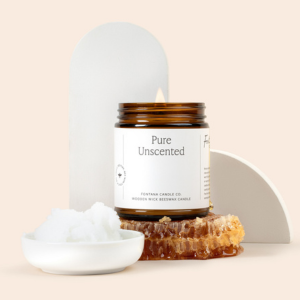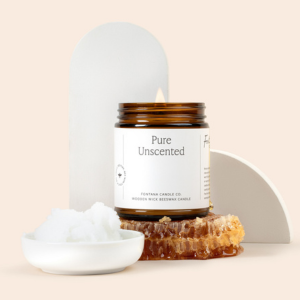California’s Fragrance Right to Know Act Reveals Toxic Chemicals – But There’s More to Disclose

If you’ve followed Fontana Candle Company or the non-toxic industry for some time, you’re likely already in on the secret that so many traditional companies don’t want you to know about: that hidden within their fragrances are dozens of toxic chemicals.
Because the components that go into giving scented products their unique smells are considered proprietary information, manufacturers do not have to disclose fragrance ingredients. That was until now.
In 2020, California passed the Fragrance and Flavors Right to Know Act (SB 312), and in January 2022 it took effect, requiring that cosmetic companies operating within California disclose all of the ingredients used in their fragrances to the state’s Department of Public Health. As defined in the Right to Know Act, this new statute applies to any cosmetic or personal care product “whose intended use is to be applied to or introduced into the human body for beautifying, cleansing, changing appearance, or promoting attractiveness.”
Since the implementation of the act, the reported results have been revealing. (Although, sadly, they are likely not surprising to those already doing their best to eliminate toxins.) Among the standouts on the reported data are several alarming toxic ingredients, including lilial, Hydroxyisohexyl 3-Cyclohexene Carboxaldehyde (HICC), and diethyl phthalate (DEP).
According to Women’s Voices for the Earth, nearly 900 products reported containing lilial, a known reproductive toxin that has been banned by the European Union (EU). In addition to being linked to reproductive problems, lilial has been shown to act as an allergen, even leading to contact dermatitis in some individuals. As another potent allergen, HICC has also been banned by the EU, yet it was reported in 121 products, and, similarly, DEP – which is linked to cancer, infertility, and reproductive harm – was reported in 79 products.
So, What Happens Now?
While the California Fragrance and Flavors Right to Know Act is allowing many consumers and personal care industry professionals to make better informed purchasing decisions, when it comes to ingredient disclosure, there is still a long way to go.
The Right to Know Act may be paving the way in dropping the secrecy around fragrance chemicals in cosmetic and personal care products in California, but there are two key problems in that sentence alone – or rather, two key words: cosmetic and California.
With the act aimed solely at cosmetic and personal care products, it in no way touches on the countless other products that we inhale on a regular basis, including candles, air freshners, cleaning products, and more. And, with the legislation solely impacting California, federal regulation is still missing.

So, what can be done? To personally avoid toxic chemicals, stick to purchasing and utilizing only products that fully disclose fragrance ingredients, such as those that are certified MADE SAFE®. To help support nationwide legislation on fragrance disclosure, click here, and to learn more about the toxic ingredients hidden inside popular fragrances, click here.

































